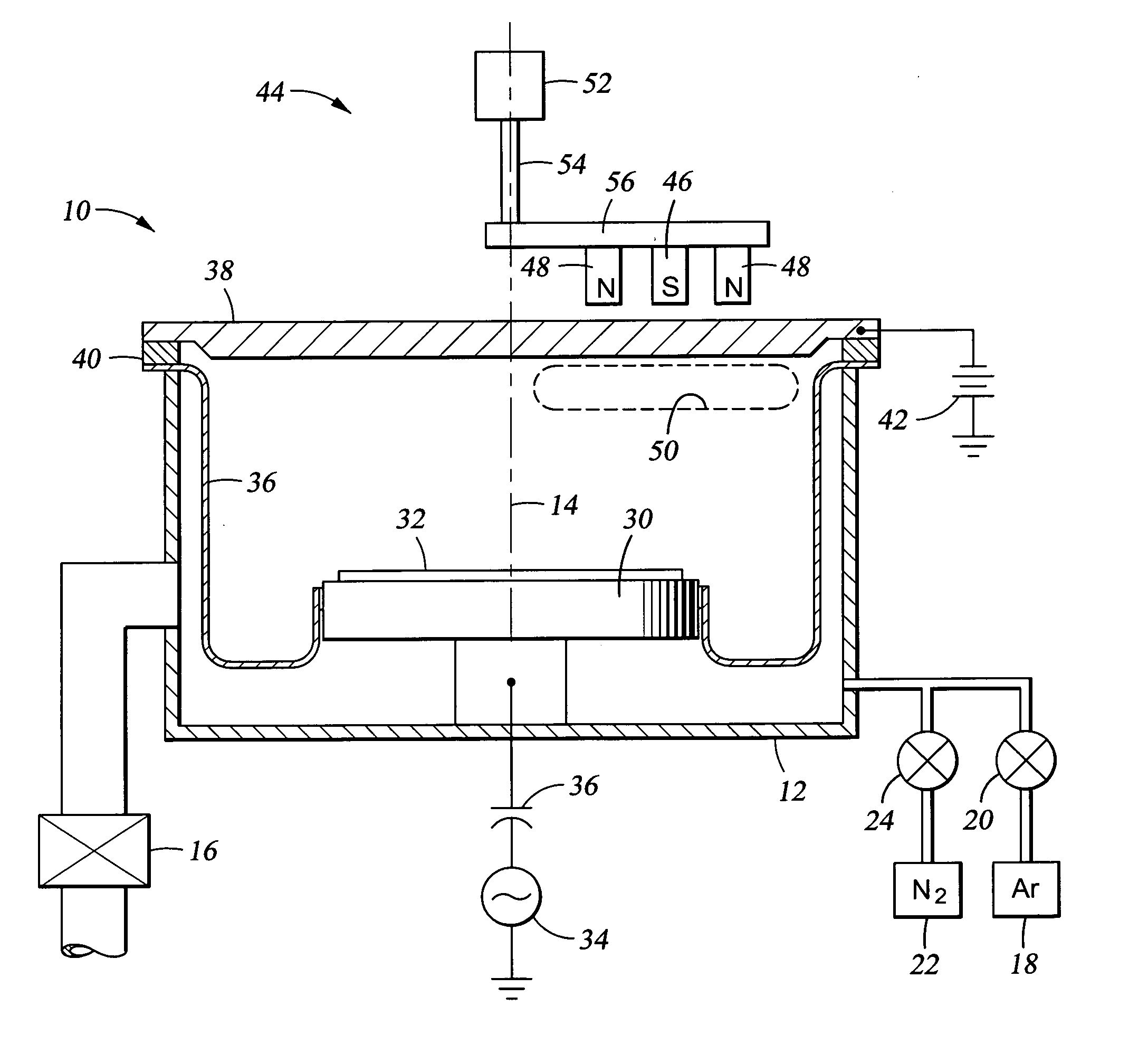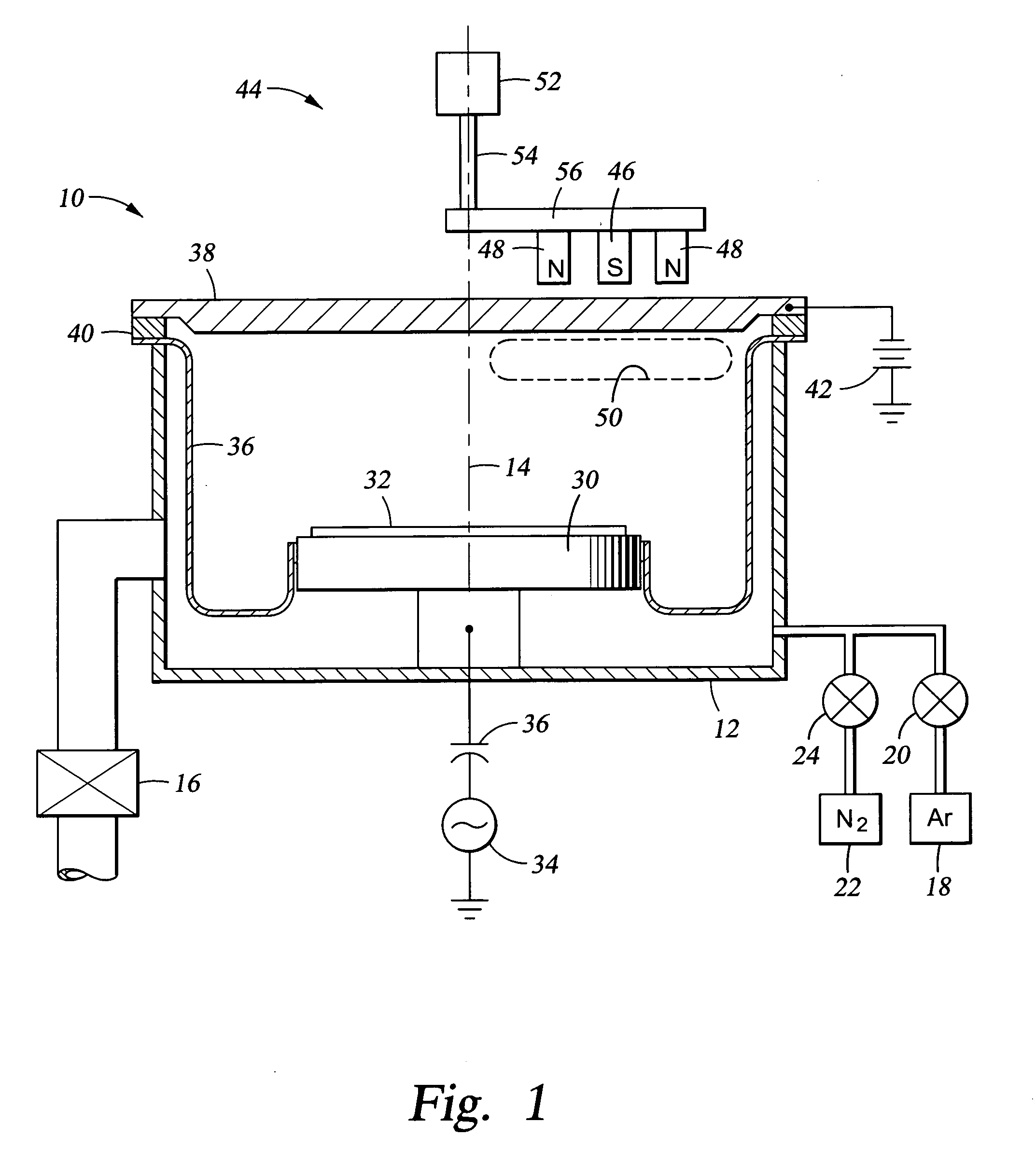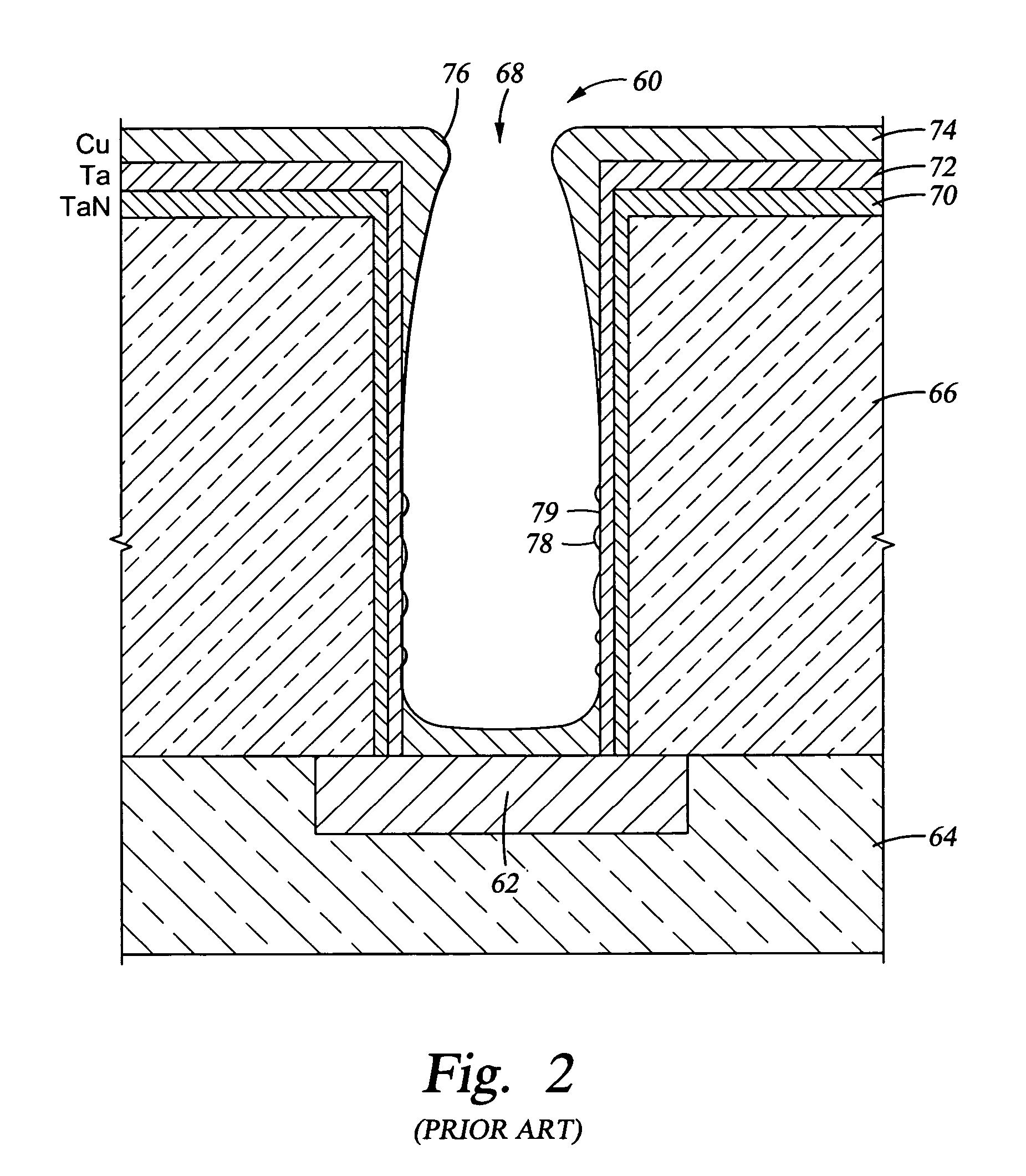Conductive barrier layer, especially an alloy of ruthenium and tantalum and sputter deposition thereof
- Summary
- Abstract
- Description
- Claims
- Application Information
AI Technical Summary
Benefits of technology
Problems solved by technology
Method used
Image
Examples
Embodiment Construction
[0032] A first embodiment of a novel copper interconnect liner structure 80 is illustrated in the cross-sectional view of FIG. 3. A barrier layer 82 of an alloy of ruthenium and tantalum is deposited directly over the upper-level dielectric layer 66 and onto the sidewalls of the via hole 68. The RuTa alloy is but one type of a refractory noble alloy to be discussed later. A refractory noble alloy is a metal so it is electrically conductive and can be deposited by magnetron sputtering using a target of the desired alloy composition. A copper seed layer 84 is deposited over the RuTa barrier layer 82 to serve as a plating electrode and as a seed for the copper filled into the remaining portion of the via hole 68 by electrochemical plating (ECP). The excess copper deposited above the top of the via hole 68 is thereafter removed by chemical mechanical polishing (CMP).
[0033] This structure provides several advantages. The ruthenium content may be sufficiently high that the RuTa alloy doe...
PUM
| Property | Measurement | Unit |
|---|---|---|
| Structure | aaaaa | aaaaa |
| Electrical conductor | aaaaa | aaaaa |
| Refractory | aaaaa | aaaaa |
Abstract
Description
Claims
Application Information
 Login to View More
Login to View More - R&D
- Intellectual Property
- Life Sciences
- Materials
- Tech Scout
- Unparalleled Data Quality
- Higher Quality Content
- 60% Fewer Hallucinations
Browse by: Latest US Patents, China's latest patents, Technical Efficacy Thesaurus, Application Domain, Technology Topic, Popular Technical Reports.
© 2025 PatSnap. All rights reserved.Legal|Privacy policy|Modern Slavery Act Transparency Statement|Sitemap|About US| Contact US: help@patsnap.com



